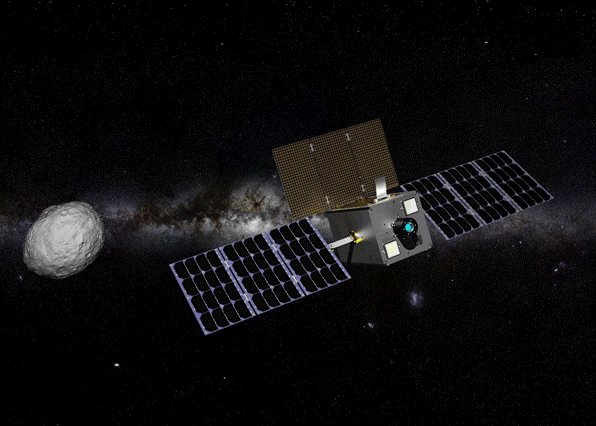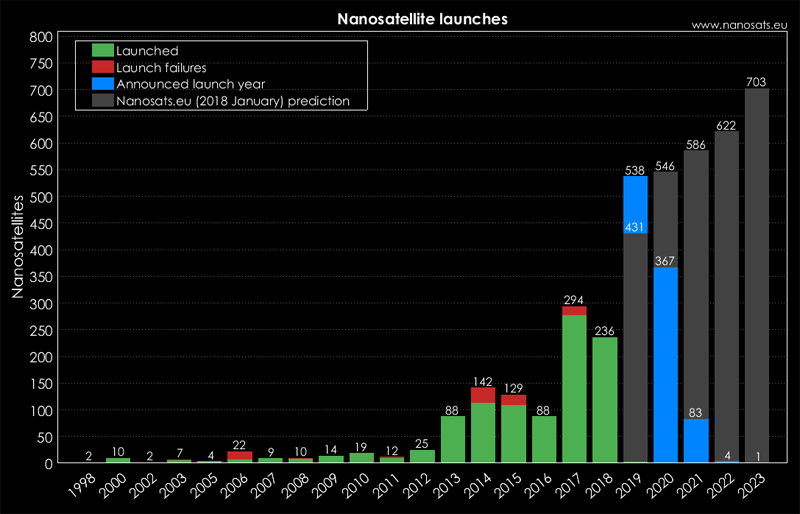
26th May 2019 First nanosat to rendezvous with an asteroid The European Space Agency (ESA) has signed a contract with GomSpace to design the first ever nanosatellite to rendezvous with an asteroid, planned for launch in 2023.
Nanosatellites, or "nanosats", are small and lightweight spacecraft, generally classed as between 1 and 10 kg (2.2 and 22.0 lb). Despite their small size, they can perform most of the functions of a conventional satellite at minimal cost. The market is growing rapidly and predicted to increase from $143 million to around $356 million by 2023. As seen on the graph below, more than 1,100 nanosats have been launched to date. Their numbers began to explode from the mid-2010s and onward, a trend that looks set to continue. The Miniaturised Asteroid Remote Geophysical Observer (M-ARGO) mission pictured here will be a standalone spacecraft – meaning it has all of the fuel and propulsion systems needed to complete its journey on board, as opposed to piggybacking on another spacecraft. Upon arrival at its destination, it will perform scientific studies at close range to determine the potential for future mining opportunities. Many different technologies will have to be developed and/or miniaturised to fit on M-ARGO. A "12 unit" configuration is envisioned, with state-of-the-art advancements in communication, instrumentation, electric propulsion and operational autonomy. If successful, it could serve as a blueprint for large numbers of future prospectors.
"The M-ARGO technology demonstration mission is intended as an enabler of a potential future operational capability for highly cost-effective in-situ resource exploration of the accessible Near-Earth Object (NEO) population, using a fleet of deep space CubeSats," says Roger Walker, from ESA's Cubesat Systems Unit. The NEO population now has more than 20,000 largely uncharted asteroids. There is no word yet on a chosen candidate – but in terms of propellant needed to achieve a rendezvous, M-ARGO will be capable of accessing the nearest 100 or so. "M-ARGO needs to be robust enough to survive three years of travelling in deep space," explains Kenza Benamar, a project manager in ESA's General Support Technology Programme. "Three years of the harshest conditions before arriving and all of the instruments still have to work. It's incredibly technically challenging – which is why we're integrating the absolute latest technology developments."
Comments »
If you enjoyed this article, please consider sharing it:
|








